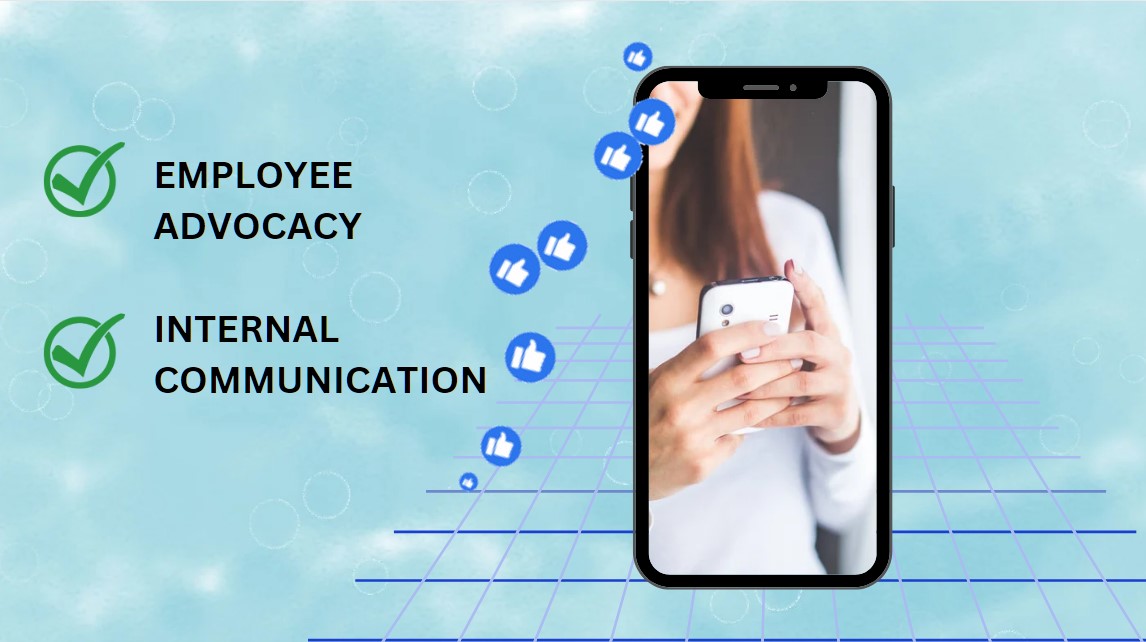Social media has transformed the way businesses communicate with their customers and stakeholders. However, it has also created new opportunities for internal communication and employee advocacy. By leveraging social media platforms, businesses can enhance their internal communication, foster employee engagement, and empower employees to become brand advocates. In this article, we will explore the role of social media in employee advocacy and internal communication.
Employee Advocacy
Employee advocacy refers to the process of empowering employees to become brand advocates and promote a company’s products or services on social media platforms. It is a powerful tool for building brand awareness, increasing engagement, and driving sales.
Companies with active employee advocacy programs are 58% more likely to attract top talent and 20% more likely to increase sales.
Benefits of Employee Advocacy
Employee advocacy can provide several benefits to businesses, including:
- Increased Brand Awareness: By leveraging the social networks of employees, businesses can expand their reach and increase their brand awareness.
- Improved Trust and Credibility: Consumers are more likely to trust recommendations from friends and family than from traditional marketing channels. Employee advocacy can help build trust and credibility by showcasing authentic experiences and testimonials.
- Enhanced Employee Engagement: Employee advocacy programs can foster a sense of pride and ownership among employees, increasing their engagement and motivation.

Best Practices for Employee Advocacy
To create an effective employee advocacy program, businesses should follow these best practices:
- Set Clear Guidelines: Establish clear guidelines and policies to ensure that employees understand what is expected of them and how to represent the brand online.
- Provide Training and Support: Provide training and support to employees to help them understand social media best practices and how to create engaging content.
- Encourage Participation: Encourage participation by creating a culture of transparency and trust. Highlight the benefits of employee advocacy and showcase success stories.
- Reward and Recognize: Reward and recognize employees who participate in the advocacy program. This could be in the form of bonuses, promotions, or other incentives.
Tools for Employee Advocacy
Several tools are available to help businesses manage their employee advocacy programs, including:
- Social Media Management Platforms: These platforms provide a centralized dashboard for managing social media accounts and scheduling posts.
- Content Curation Tools: Content curation tools help businesses find and share relevant content with their employees.
- Analytics Tools: Analytics tools provide insights into employee advocacy performance, including engagement metrics and reach.
Internal Communication
Internal communication refers to the exchange of information and ideas within an organization. It is essential for promoting collaboration, transparency, and alignment among employees. Social media platforms can provide a powerful tool for enhancing internal communication and engagement.
Benefits of Internal Communication on Social Media
Internal communication on social media can provide several benefits to businesses, including:
- Improved Collaboration: Social media platforms can facilitate collaboration among employees by providing a central hub for communication and information sharing.
- Enhanced Engagement: Social media platforms can increase employee engagement by providing a more interactive and personalized communication channel.
- Increased Transparency: Social media platforms can help businesses promote transparency by providing employees with real-time updates and insights into company activities.
Best Practices for Internal Communication on Social Media
To create an effective internal communication strategy on social media, businesses should follow these best practices:
- Define Your Objectives: Establish clear objectives and goals for your internal communication strategy on social media. What do you want to achieve? What metrics will you use to measure success?
- Choose the Right Platform: Choose the social media platform(s) that best align with your objectives and the preferences of your employees.
- Create Engaging Content: Create engaging content that is relevant and informative to your employees. Use a mix of text, images, videos, and other media to keep the content varied and interesting.
- Encourage Feedback and Participation: Encourage employees to provide feedback and participate in the conversation. Respond to comments and questions promptly and authentically.
- Empower Leaders and Champions: Identify and empower leaders and champions within your organization who can help promote the internal communication strategy and encourage participation.
Tools for Internal Communication on Social Media
Several tools are available to help businesses manage their internal communication on social media, including:
- Employee Advocacy Platforms: Employee advocacy platforms can also be used for internal communication by providing a centralized hub for employee communication and collaboration.
- Enterprise Social Networks: Enterprise social networks are specifically designed for internal communication and collaboration, providing features such as group messaging, file sharing, and task management.
- Collaboration Tools: Collaboration tools such as Slack and Microsoft Teams can be used to facilitate real-time communication and collaboration among employees.
Managing an Engaged Workforce
Social media platforms provide powerful tools for enhancing employee advocacy and internal communication. By leveraging these platforms, businesses can create effective employee advocacy and internal communication strategies, businesses should follow best practices and use the right tools for the job.
With the right approach, social media can become a powerful tool for building a strong and engaged workforce.

